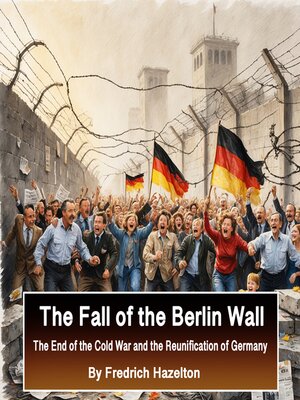The Fall of the Berlin Wall
audiobook (Unabridged) ∣ The End of the Cold War and the Reunification of Germany
By Fredrich Hazelton

Sign up to save your library
With an OverDrive account, you can save your favorite libraries for at-a-glance information about availability. Find out more about OverDrive accounts.
Find this title in Libby, the library reading app by OverDrive.



Search for a digital library with this title
Title found at these libraries:
| Library Name | Distance |
|---|---|
| Loading... |
The Berlin Wall stands as one of the most defining symbols of the Cold War, a stark reminder of the ideological divide that shaped global politics in the second half of the 20th century. For nearly three decades, it separated families, friends, and a nation, embodying the tension between the communist East and the capitalist West. Its fall on November 9, 1989, marked the beginning of the end of the Cold War and set the stage for German reunification, forever altering the political landscape of Europe and the world.
The origins of the Berlin Wall lie in the aftermath of World War II. Germany, defeated and devastated, was divided among the Allied powers into zones of occupation. The ideological rivalry between the Soviet Union and Western powers grew, culminating in the division of Berlin, a microcosm of the larger global conflict. East Germany, under Soviet influence, sought to stem the flow of its citizens fleeing to the West, leading to the construction of the wall in 1961.
Life in a divided Berlin was marked by stark contrasts. The West flourished as a hub of democracy and economic prosperity, while the East struggled under authoritarian rule and economic stagnation. For those trapped behind the wall, the barriers were not only physical but also symbolic of lost freedom and opportunity. Despite this, the human spirit remained resilient, as many risked everything in daring attempts to escape to the West.







